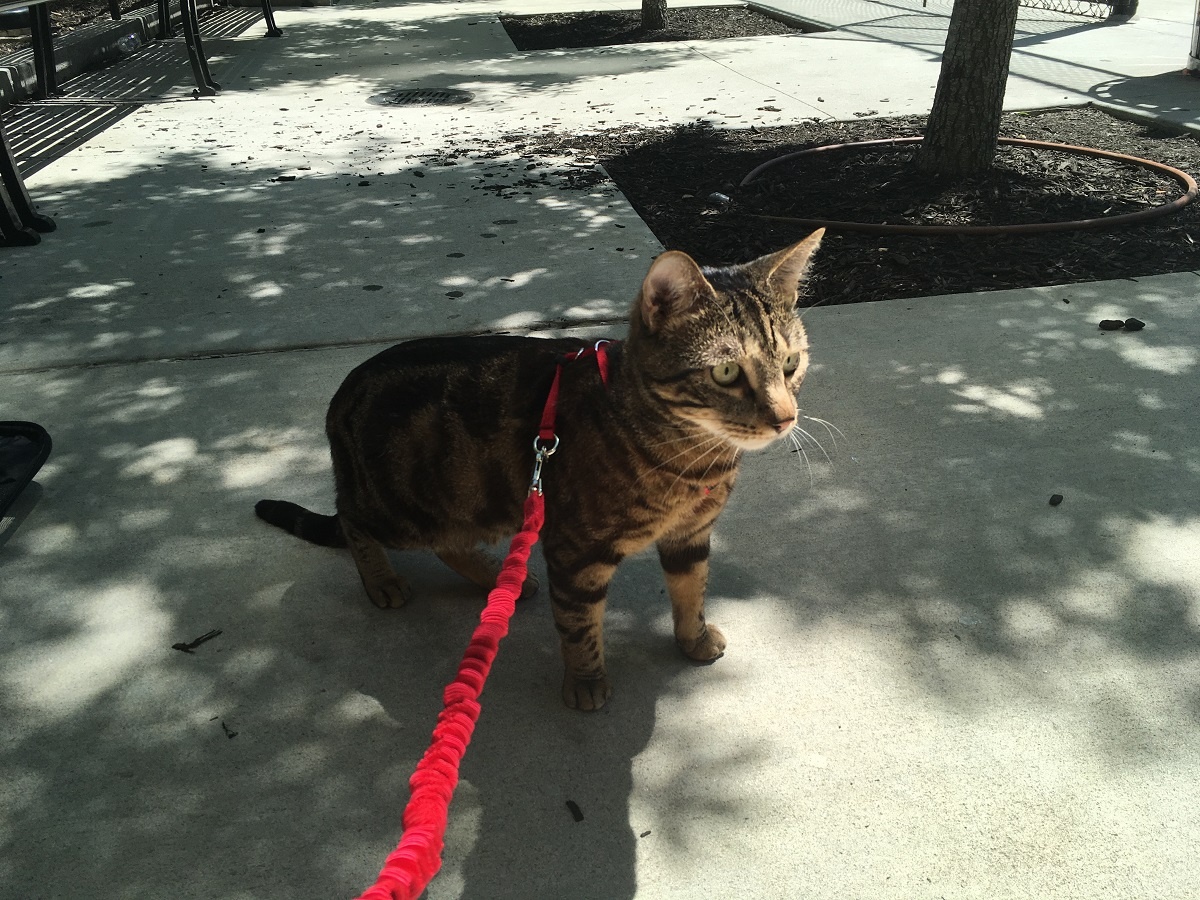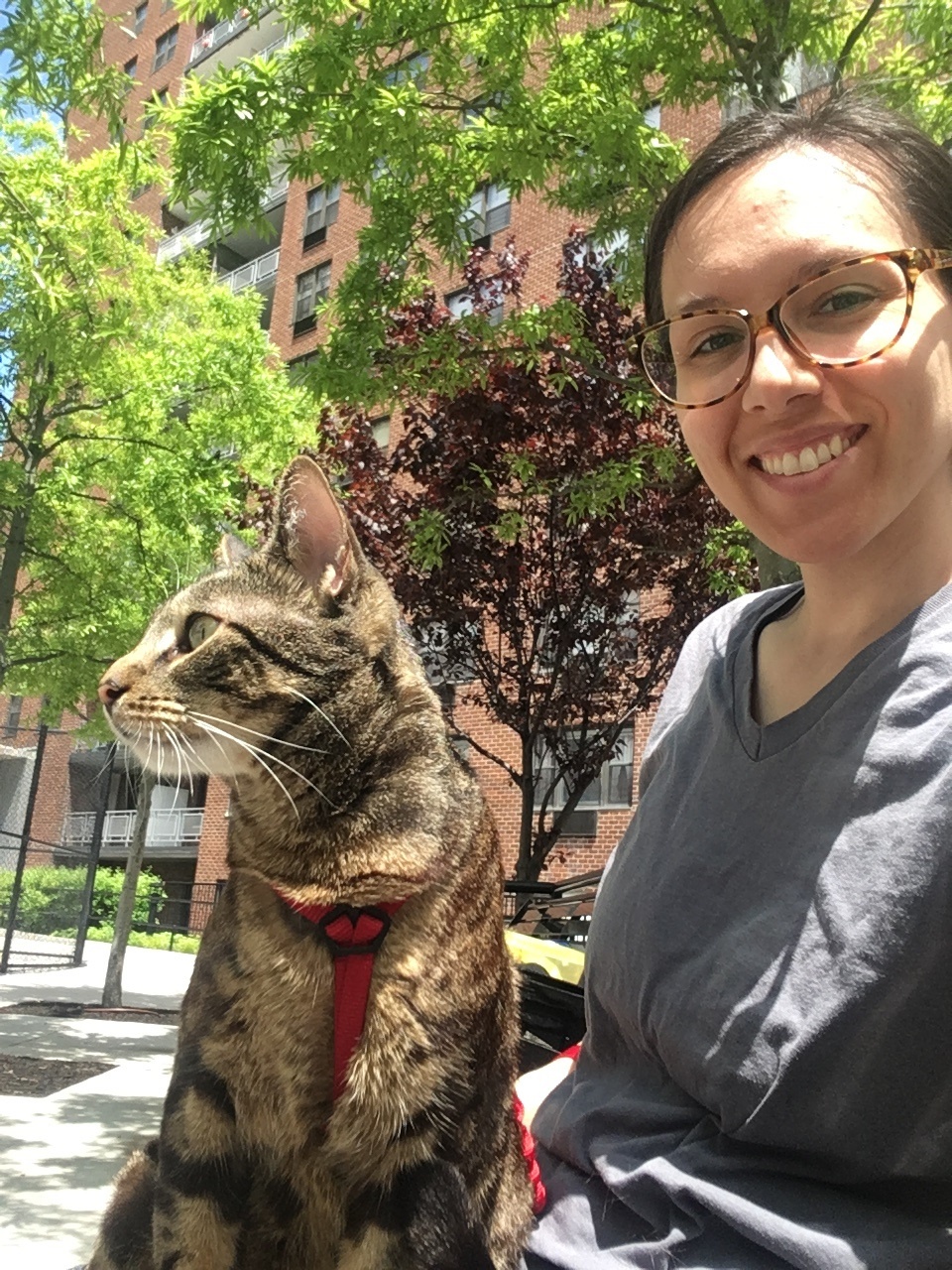Do cats travel well? Cats can travel well with positive reinforcement training. Some cats prefer to stay in their territory and not travel.
Cats are territorial creatures that prefer to stay home.
However, if you take your time to train your cat on a harness and leash, you can travel well with him.
Here’s your guide to help travel with cats safely:
- How to train your cat
- Cat travel accessories
- Pet travel documents
- Pet emergency kit
- Cat boarding and cat hotels
- How to find a cat sitter
- Cat sitter template
Check out the guide today or pin the image below to your Cat Travel board on Pinterest.
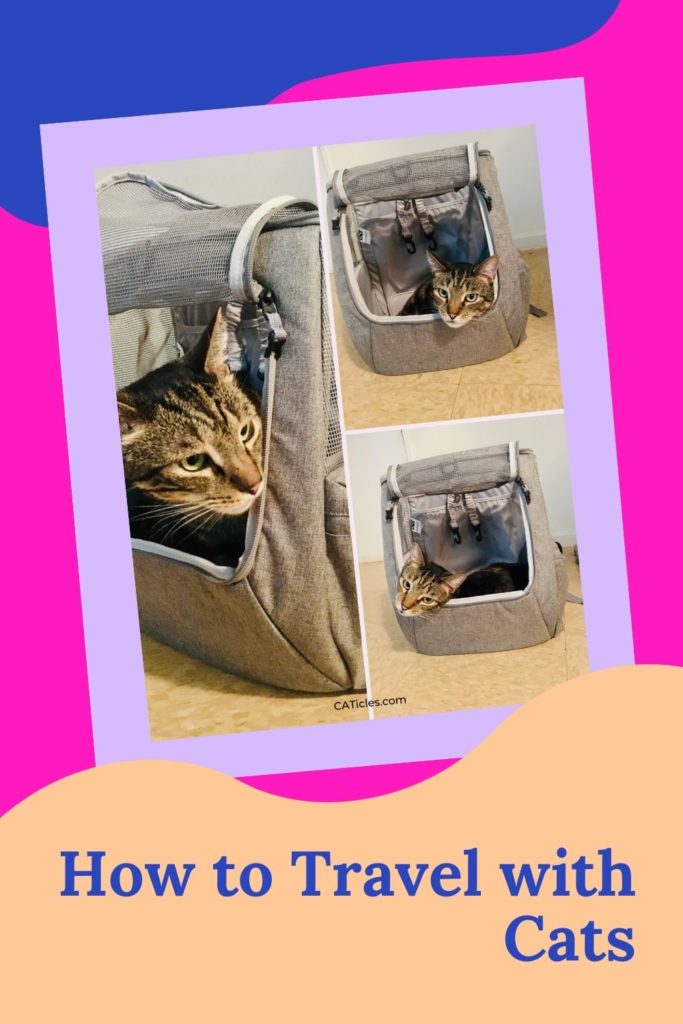
Disclaimer: Nothing I say is medical advice. I earn a commission if you purchase through affiliate links below. No additional cost to you.
PS – If you’re ready to give your cat a happy life, my Cat Care & Enrichment Binders are for you!
My Cat Care & Enrichment Binders include printable and digital cat care planners, trackers, sitter instructions, medical records, and bonus videos for litter box hacks, how to bond with cats, and how to find a sitter you trust so you can give your cat a happy life.
1. How to train your cat
Start training your cat a few months before you plan to travel.
You can clicker train your cat very easily.
This is great for emergency situations, especially when you travel.
Train your cat how to:
- Come to you when called
- Sit and stay
- Use the harness and leash
I use Cat School’s clicker training kit with Jericho.
Use healthy treats as rewards.
This will help your cat associate training commands and the harness with a positive experience.
Cat training tips
Don’t wait until a week before you travel. Training takes time and patience.
Training sessions should be less than 5 minutes.
Create a training routine because cats love routines.
Use healthy cat treats for positive reinforcement.
2. Cat travel accessories
Perhaps training went well, and you’re ready to travel with your cat.
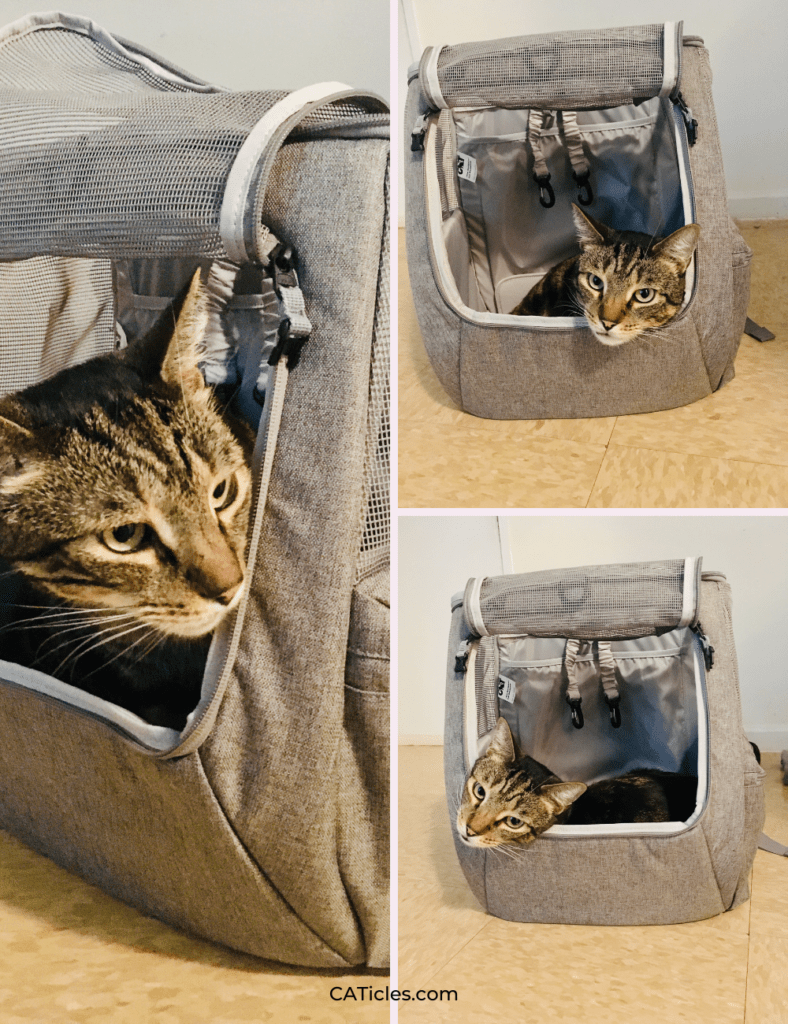
What travel accessories do you need?
- Food, treats, and water
- Litter box supplies
- Cat carrier
- Harness, leash, collar, and ID tag
- GPS tracker for collar
Bring extras with you because sometimes travel plans get delayed.
Your Cat Backpack sells collapsable food and water bowls, a travel litter box, cat backpacks, cat harnesses, collars, and a leash.
You can buy an engraved pet ID tag and a GPS tracker on Amazon.
3. Pet travel documents
You’ll also need to carry your cat’s documents.
You should carry:
- A printed photo of your cat
- Vaccine history
- Vet contact
- Medical and special need
- Emergency contact
These documents provide proof that he is your cat and that he is healthy, just in case he escapes.
Research the nearest animal hospitals where you’re traveling.
Print this information along with the following:
- The ASPCA Animal Poison Control hotline at 1-888-426-4435
- National Pet Poison Helpline at (855) 764-7661
Keep these printed documents on you at all times.
4. Pet emergency kit
You’ll need to travel with an emergency first aid kit for yourself and your cat.
Here are items that you should include in your pet emergency kit:
- Povidone-iodine to clean wounds. Flush with water. You can pre-soak pads.
- Triple antibiotic ointment. Apply this to a wound after it is cleaned.
- Saline solution. This should be used to flush out irritants from your cat’s eye. It can also be used to flush irritants from a cut or scrape.
- Hydrogen peroxide at 3%. This is to be used only to induce vomiting if poison control instructs you to do so. Do not use hydrogen peroxide to clean wounds.
- Sterile nonstick pads, gauze, elastic bandages, or cotton balls. Cover the clean wound with the pads and use gauze or bandages to wrap the wound.
- Tweezers, blunt-tipped scissors, and nail clippers. Use tweezers for splinter or tick removal. The scissors help remove hair from a wound or material caught on fur.
- Clean cotton towels. Towels can be used as a pressure bandage, blanket, or sling.
- Flashlight. This is helpful to see in the dark, obviously, but also to see the cat’s paws and between the toes.
Amazon and Chewy both sell pet emergency kits that include the essentials above.
5. Cat boarding and cat hotels
Perhaps you’ve found out that your cat won’t travel well.
Cat boarding and hotels are not recommended for when you travel.
Cats are territorial and prefer to stay in their own home.
It is much better to hire a cat sitter to visit your cat at home while you travel.
6. How to find a cat sitter
The best way to find a cat sitter is to search online “cat sitter near me”.
Find a business that explains its services and offers client testimonials.
I worked with a private cat sitting company for 3 years before starting my online business.
We administered all types of medication and took our job very seriously.
Many clients told me, “You’ll never see my cat”.
But we always became friends after a few visits. So yes, even shy cats should have a cat sitter come to visit.
Or you can download the Wag! app to find an insured and background-checked sitter in your local area. New clients can get a $5 credit using code: JESSICA9860.
I also walked dogs with Wag! for 3 years.
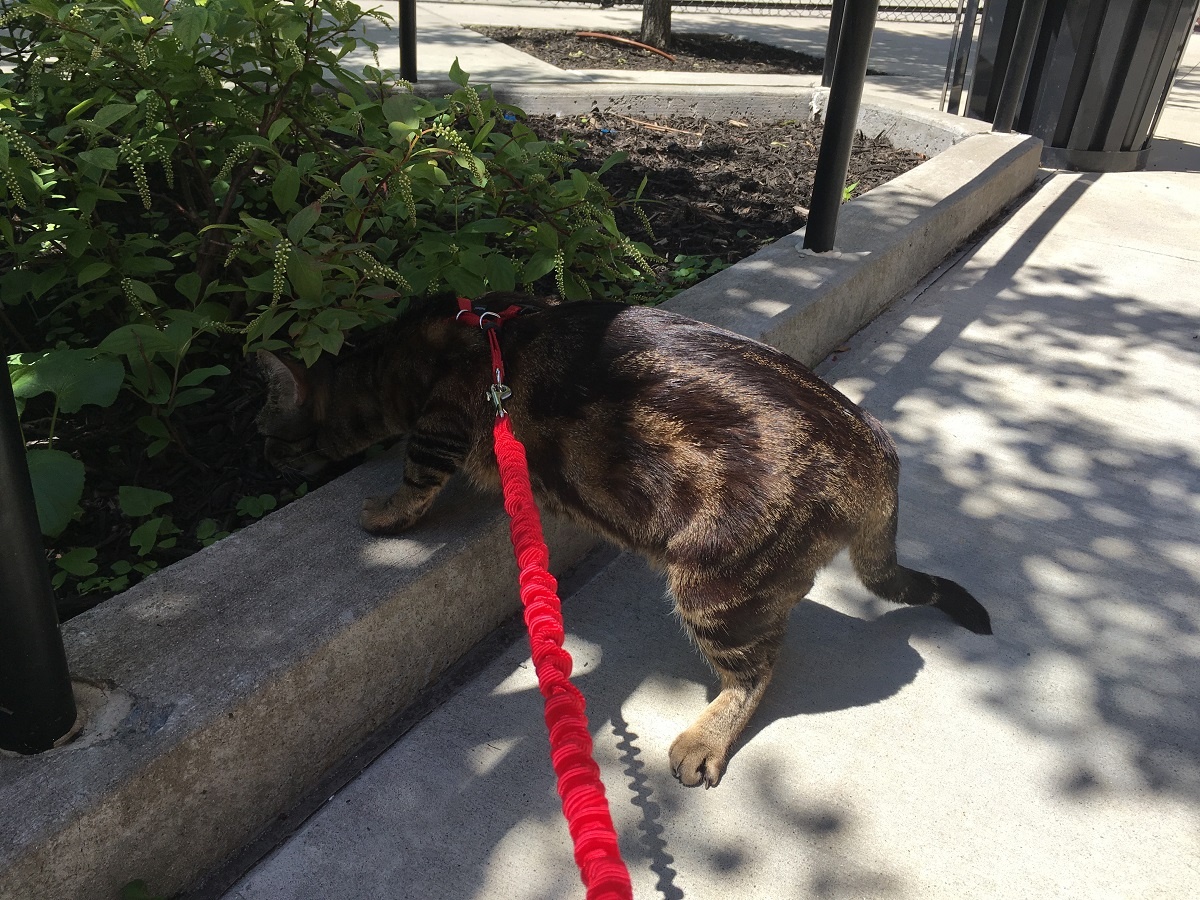
7. Cat sitter template
Quality pet sitting companies offer a complimentary meet and greet.
This is your chance to meet the sitter to see if you’re the right fit for each other and to go over care expectations.
You and your pet sitter should discuss the following:
- Emergency contact. AKA your cat’s guardian.
- Vet info and release form.
- Super/landlord/handyman contact.
- Keys and locks.
- Hiding places.
- Feeding instructions.
- Litter box instructions.
- Special needs.
- Entertainment.
- Miscellaneous. Plants, mail, AC, etc.
Provide as much detail as possible at the in-home meeting. This will help you travel with peace of mind.
Final thoughts on cat travel
Remember to take it slow with your cat. Training properly takes time and patience.
Always prepare with the proper travel accessories.
Safety first!
Hire a cat sitter to visit your cat in your home if you find that your cat doesn’t travel well.
Ready to give your cat a happy and healthy life?
Grab my Cat Care & Enrichment Binders and get the same trackers and planners that 185+ cat parents used to give their cats a fun, enriching, and happy life.

